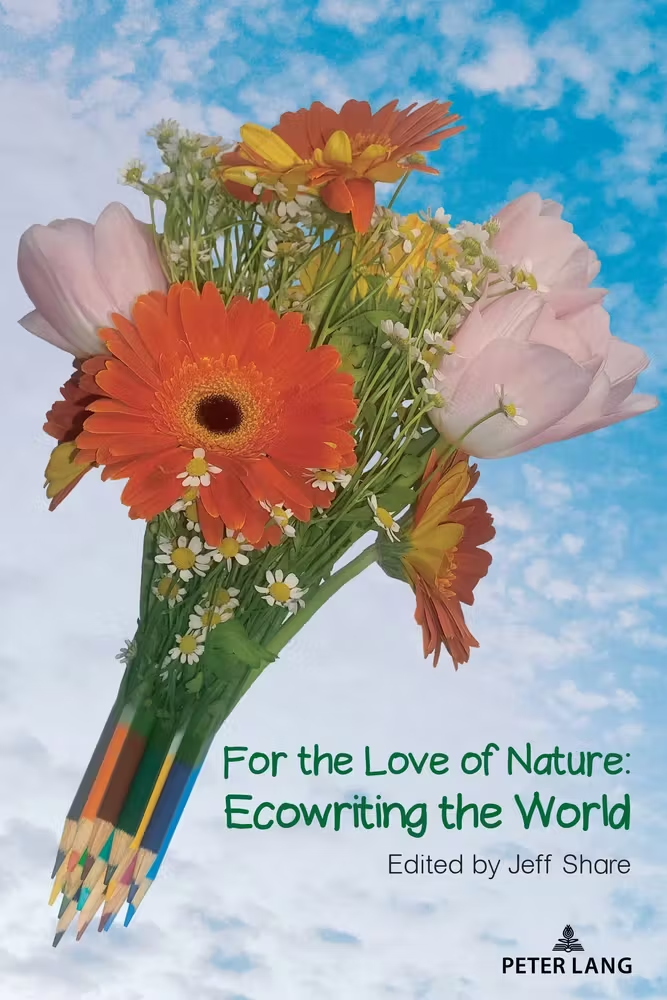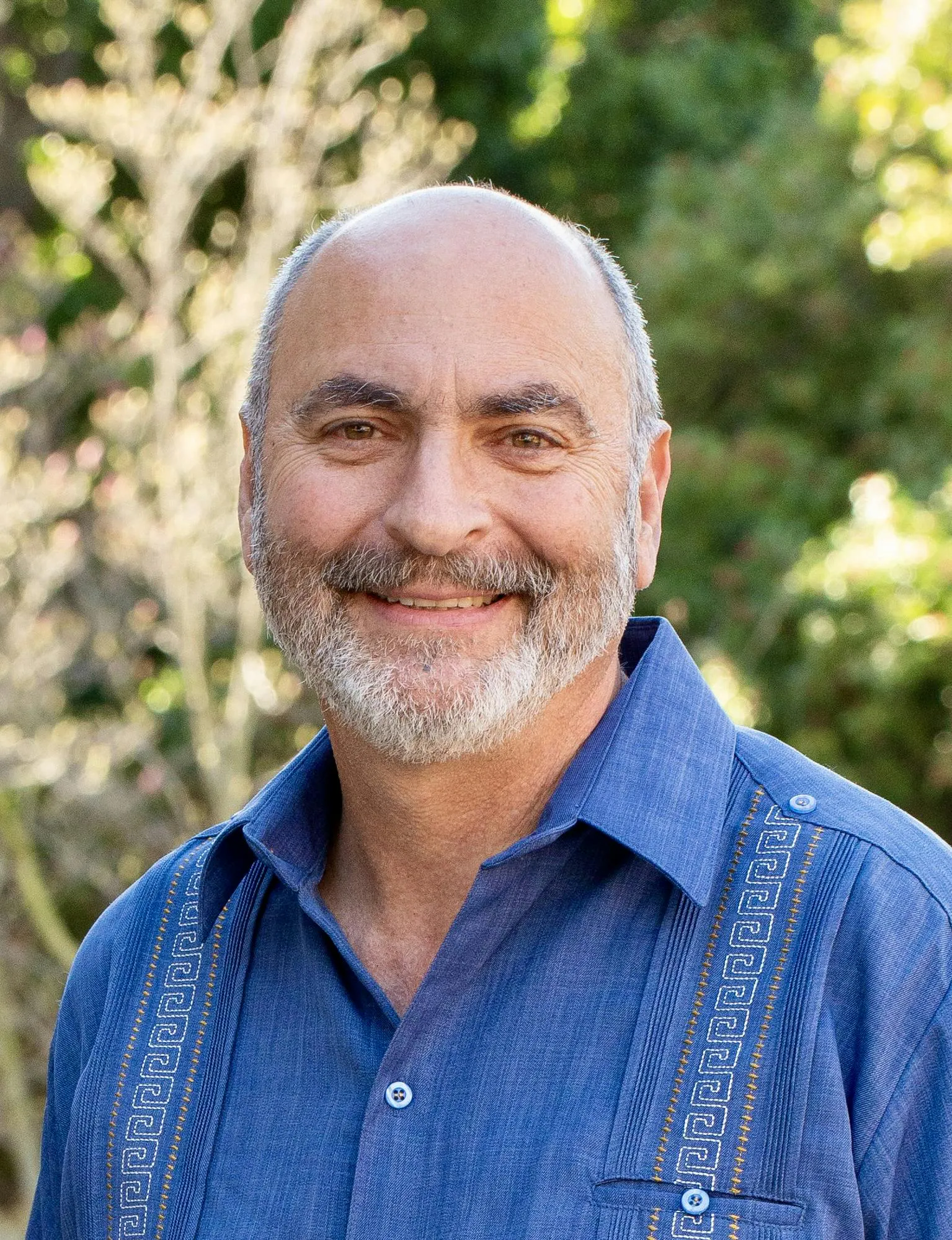New book presents international perspectives on the natural world, ways to teach and promote environmental and social justice through storytelling.
As an award-winning photojournalist who chronicled the Great Peace March for Nuclear Disarmament in 1986, Jeff Share knows the power that grassroots movements have in addressing the most pressing issues facing society. Today, as a thought leader in the field of critical media literacy, he has published, “For the Love of Nature: Ecowriting the World,” a new edited volume that empowers students and teachers to address the challenges in finding ways to continue life on earth in a sustainable way.
“For the Love of Nature” is inspired by an article that Share read by Gavin Lamb, a writer and researcher in ecolinguistics and environmental communication, as well as a group of Share’s undergraduate students, who created a peer teaching project to discuss environmental justice. The book’s international cadre of contributors – among them many of Share’s UCLA students and colleagues – have in common a passion for nature and a commitment to promoting social and environmental justice for all through a variety of genres including video, journals, letters, comic strips, poetry, and more. The book also provides lesson plans and resources for K-12 teachers to engage their students in ecowriting.
Share, who is a lecturer in the UCLA Teacher Education Program and Education and Information Studies undergraduate programs, taught bilingual education in the Los Angeles Unified School District for seven years. He later joined the nonprofit Center for Media Literacy as the regional coordinator for training. Share’s research and practice interests include preparing K-12 educators to teach critical media literacy for social and environmental justice.
Share’s books include “Media Literacy is Elementary: Teaching Youth to Critically Read and Create Media,” “Teaching Climate Change to Adolescents: Reading, Writing, and Making a Difference,” and “The Critical Media Literacy Guide: Engaging Media & Transforming Education,” which he co-authored with his UCLA colleague, Distinguished Research Professor Douglas Kellner.
Share is a Fulbright Specialist and English Language Specialist for the U.S. State Department and has taught critical media literacy and environmental justice in India, Argentina, Mexico, China, and Germany. In 2021, he was honored with the Elizabeth Thoman Service Award from the National Association for Media Literacy Education, which recognizes those who have significantly contributed to the field of media literacy. A UCLA alumnus, Share earned his Ph.D. in education philosophy in 2006. He achieved his master’s degree in media literacy and bachelor’s degree in liberal studies at Vermont College.
What planted the seeds that created “For the Love of Nature”?
Jeff Share: I read an article by Gavin Lamb that was about this idea of ecowriting, writing about the natural world… looking at the positive as well as the negative and exploring our relationships with nature. The article moved me a lot, so I chose to make ecowriting the principal assignment for my environmental justice class (Ed M135). The assignment is open-ended so that students can conceptualize writing in any way they want and can create all sorts of responses. I’ve had a wide variety of work submitted for the ecowriting projects, all different examples of students’ reflections about their relationship with the natural world.
The first time I asked my students to create ecowriting, I was blown away by the quality of the work they produced and decided that the poetry, stories, and different pieces they’ve been creating should be published, because they’re so good. I contacted Gavin Lamb and he was wide open to the idea so I started talking with other colleagues who are working in the area of critical media literacy and environmental justice. I ended up pulling together a terrific collection of essays by scholars from Australia to Rome, exploring the power of writing about nature and using writing as a tool for reflection and expression in many different formats, from video essays to cartooning to just pen and paper writing.
I started bringing it all together and reached out to an editor I had worked with in the past, Shirley Steinberg, and she liked the idea. She said, “You know, if you add some lesson plans, we can turn this into a great little book for teachers.” So, I contacted my teaching assistant at the time, Andrea Gambino, who with another colleague, wrote up some wonderful lesson plans. We included those at the end with a collection of resources that followed a section with examples from my students’ ecowriting. We published about a dozen short stories, letters, poems, and different pieces that my students had created during the environmental justice class.
When the pandemic started, I connected with eight of my students who wanted to think through different ways of exploring critical media literacy and environmental justice. Andrea and I met with these students every week to support them in designing a lesson that they then taught to their peers. After that ended, we talked about having them write a chapter about the process they went through of teaching their peers about environmental justice. The eight students collaboratively wrote one chapter in the book which I really love because it’s a powerful reflection about what they learned and gained from the process of peer teaching.

How does the book’s diversity of perspectives and genres make ecowriting seem more accessible and essential to building a deeper understanding of the earth’s crisis and possibility?
Share: Many of the essays are written by people with a background in critical media literacy. There is a strong sense of criticality through questioning the role of the dominant stories and narratives about how we interact and relate to the natural world.
One of the authors is Antonio Lopez, a pioneer in the field of ecomedia literacy, who has been combining critical media literacy with environmental justice for a long time. I’ve presented at several conferences with Antonio and Theresa Redmond, another author included in the book. Melissa Greene-Blye is a professor from the University of Kansas who wrote a terrific chapter about Indigenous perspectives. The essay by Rebecca Solnit, which was something our Dean Tina (Christie, Wasserman Dean, SEIS) helped to acquire, does a beautiful job of framing the need for critical hope as a collaborative action. Through the narrative of storytelling, we can analyze media representations and recognize the need to rewrite and create new stories to provide counternarratives that challenge unsustainable ideas and practices.
The student examples are all new stories, different ways of rethinking. One student wrote a letter to their councilmember. Other students wrote diary entries, poems, a letter to Mother Nature, a short movie script… all sorts of different pieces that are powerful expressions of our concerns for the planet, for each other, for our fears about the climate crisis, and our desire to contribute something to change the trajectory.
There are two student examples of digital ecowriting. “I Am a Drop of Water” is a digital poem by Yaying Wu, a student from my environmental justice class. There is also a link to a video poem by a group of students I worked with in Germany. Last year, I was invited to teach a critical media literacy class at the University of Münster in Germany for a week. It was a short, intensive class with pre-service teachers. For their final project, the students walked through the botanical garden in the town of Münster and then worked collaboratively to create video poems. There’s a link in the book on page 132 that has a QR code where you can see and hear one of their poems.
In many ways, the book has a lot of SEIS in it. First off, it was inspired by the environmental justice class I teach to undergrads and includes many examples of their ecowriting. There are also a couple of Easter eggs, little wonderful treasures sprinkled about. There’s a quote from Annamarie Francois’ (SEIS associate dean of public engagement) sister, Kumu Lehua Hawkins, who I interviewed about the power of language and words – she talks about the spirit of aloha. There is a short essay by Rose White, a teacher I used to work with who also taught in our teacher education program. And the cover of the book was designed by Justin Brown, Andrea’s fiancé and a student at UCLA. I love how he designed the artwork for the cover. It brings me great joy to have this all together in one book.
Do you think that having gone through a global pandemic has brought these issues to the forefront, with people spending more time at home and in nature?
Share: I haven’t done research on that, but it’s hard to imagine that it didn’t have some type of impact because it gave us much more time in the same place to explore our surroundings. A lot of people started taking more walks and going to parks, finding spaces where they wouldn’t be at risk of catching the virus.
But at the same time, now that the pandemic is less of an issue, I’m still seeing tremendous interest from the students. Their passion is powerful and the ecowriting they are creating is just amazing. Students have written and performed songs, designed clothing and jewelry, and choreographed dance and ice-skating performances. One student created a book out of homemade paper with California wildflower seeds embedded in the paper. Then, she wrote, painted, and drew in the book. Her plan is to bury the book so that one day it will grow and bloom.
How does critical media literacy about the environment enhance the study of various majors across campus?
Share: The environmental justice class is taught through a critical media literacy lens. We look at the environmental climate crisis not so much as a problem of science, but more as a problem of communication, culture, economics, and politics. The hard sciences have already documented the problem and demonstrated what we need to do to solve it. Therefore, it is the humanities that need to help us as a society make the paradigm shifts necessary to change our thinking and actions.
One of the things we explore are how Indigenous cultures have for thousands of years lived sustainably with the environment. We compare and contrast the Western Capitalist worldview that encapsulates an ego-logical perspective – a logic of human domination – versus a more sustainable Indigenous worldview that is based on an ecological perspective – relationships of reciprocity and interdependence with the natural world. We discuss what we need to do to move towards a more socially just and sustainable future.
We’re living in a culture based on endless growth, overconsumption, sacrifice zones, and harmful extraction and exploitation of our natural resources and people. On a finite planet, this way of life is scientifically not sustainable. The climate crisis is heating the oceans and atmosphere, and contributing to extreme weather events around the world – all of these impacts are being caused because we’re living in a way that is not healthy for humans or the planet.
I begin the book with an analysis of the overview effect, where astronauts and cosmonauts who went up into space and looked back at the earth experienced an intense moment of consciousness raising about just how important, fragile, and sacred our planet is. They talk about crying and feeling this deep emotional effect. My hope is that this book can help those of us who cannot travel into space, to experience a greater appreciation of our environment through ecowriting. We need to find ways to reconnect with nature and develop that sense of sacredness in the natural world so that we stop exploiting it and start living with an understanding of our interconnections and interdependence with each other and all of nature.
